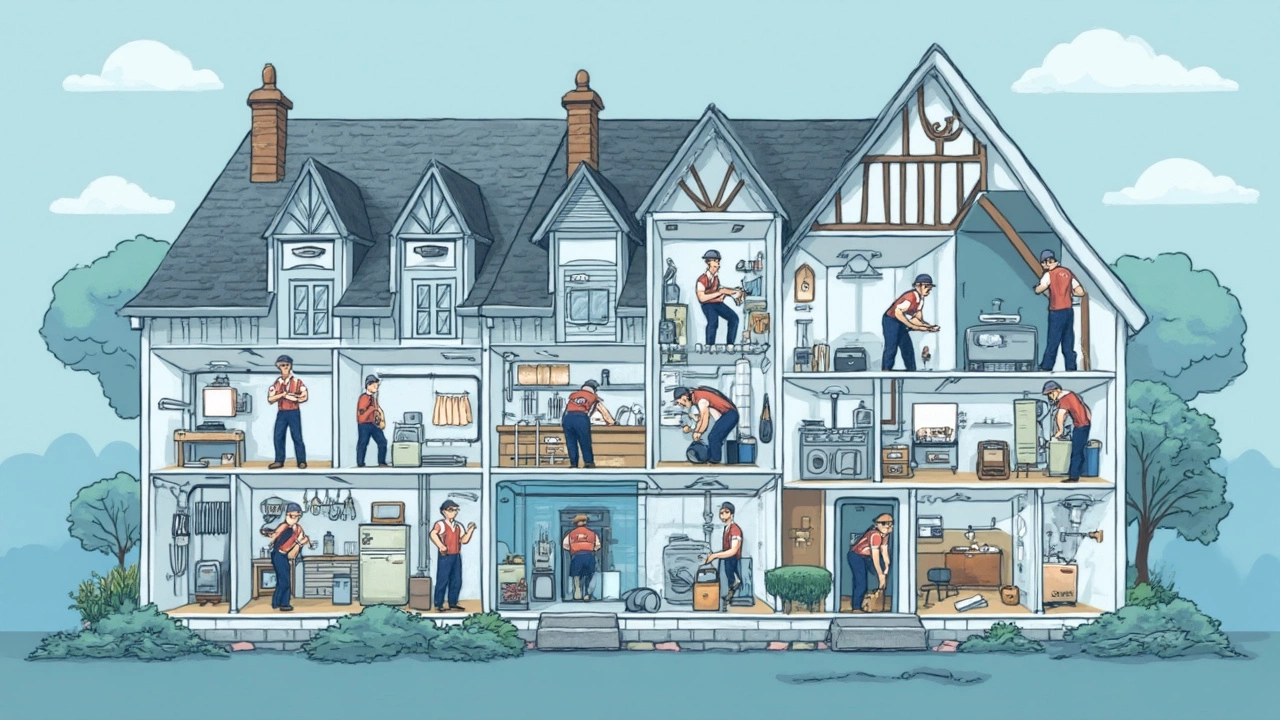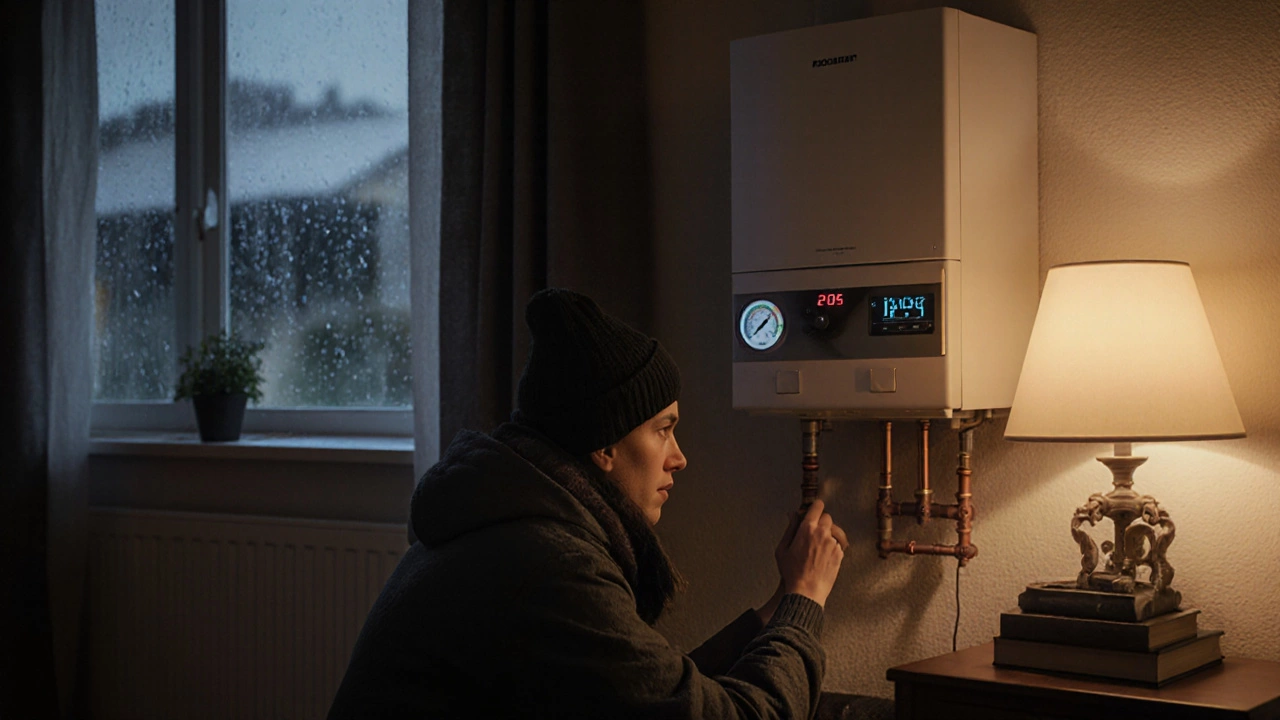If you’ve ever shopped for a new boiler and felt your bank account cry, you’re not alone. These things aren’t cheap, and the price can leave your head spinning. So why does putting in a new box for hot water and heat cost so much more than buying a nice fridge or a TV?
Let’s get right to the core. With boilers, you’re not just paying for a metal machine. The full cost ropes in the unit, special setup, professional know-how, building codes, even the right paperwork. Plumbing and gas work isn’t a DIY project unless you like living dangerously—or explaining yourself to your insurance later.
Plus, the market moves fast. Energy-efficiency rules keep changing. Materials go up in price. The parts inside your boiler—a mix of smart tech and tough metals—are designed to last, but they come with a price tag to match their lifespan. And if you’ve got an older setup or tricky space? That makes the job slower, and time is money when you’re paying a licensed pro.
Knowing what’s eating up that bill isn’t just about curiosity. Get a grip on these details, and you’ll spot ways to save, dodge useless extras, and feel way more confident when you get those quotes.
- What’s Wrapped Up in the Boiler Price?
- Labor: Where the Hours (and Costs) Go
- Hidden Extras No One Mentions
- How to Avoid Overpaying
What’s Wrapped Up in the Boiler Price?
That big price tag for a new boiler replacement isn’t just about the box sitting in your closet or basement. The total cost covers a stack of things, and the unit itself is just the start.
Here’s what you’re actually paying for when you get a quote:
- The Boiler Unit: This is usually half—or more—of the total. High-efficiency models and big brands cost more. A mid-range combi boiler can easily run over $2,500 by itself, while a more basic unit might land closer to $1,500.
- Parts and Materials: Installation needs pipework, valves, venting, wiring, and sometimes an upgraded flue. These add up fast—especially in older houses where nothing matches up quite right.
- Controls and Thermostats: If you’re swapping an old manual dial for a new smart thermostat, that’s an extra charge. Plus, some newer boilers won’t work without digital controls.
- Disposal and Old Boiler Removal: Hauling away your old unit and disposing of it safely isn’t free. Some places even charge extra for this.
- Permits and Inspections: Local laws usually require paperwork and a final inspection for any gas or oil appliance replacement. This guarantees safety (and keeps things legit with your insurance and house sale later).
To put the breakdown in perspective, check out this simple table showing what typically goes into the total cost:
| Cost Category | Estimated Percentage of Total |
|---|---|
| Boiler Unit | 45-55% |
| Labor & Installation | 30-35% |
| Permits & Inspections | 3-5% |
| Parts/Materials | 7-10% |
| Disposal/Old Unit Removal | 2-3% |
As you can see, the boiler itself isn’t the only thing draining your funds. All those extras—especially labor and compliance—stack up quickly. And if you want an extra feature, like WiFi controls or extra zoning, that’s a whole new line on the bill.
Knowing what’s actually built into that price stops surprises and helps you focus on what really matters when comparing quotes.
Labor: Where the Hours (and Costs) Go
This is where things really add up on your bill. The crew showing up at your door isn’t just there to loosen a few bolts and haul away your old boiler. Replacing a boiler is a chunk of work, and every step stacks more hours onto the job.
First off, safely removing the old unit takes care and time, especially if it’s tucked into a tight spot or caked with years of grime. Next, most local laws mean only a licensed pro can touch your gas or plumbing lines. They need to make sure everything lines up with safety codes—no room for error when it comes to gas leaks.
Here’s what those hours usually look like, start to finish:
- Shutting off the system and disconnecting gas, water, and electricity
- Hauling out the old boiler (not always a one-man job—those things can weigh up to 200 pounds)
- Prepping pipes and flues—sometimes means extra repairs or rerouting if your home’s setup has changed
- Installing and anchoring the new boiler
- Carefully hooking everything up, including your thermostat and other controls
- Running leak checks, testing, and tuning the whole system
- Clearing out debris and making sure the work meets inspection standards
Every home is different. If you’re switching from an old-school model to a modern, high-efficiency unit, the installer might need to update your venting or even upgrade your wiring. Each wrinkle means more hours and more out of your pocket.
Let’s talk numbers. According to a 2024 survey by HomeServe, labor costs can make up 30-50% of the total boiler replacement bill in the UK and US. That means if your job costs $6,000, up to $3,000 might be for labor alone. Here’s a handy breakdown:
| Job Stage | Average Hours | Typical Cost (USD) |
|---|---|---|
| Remove Old Boiler | 2–4 | $300–$600 |
| Site Preparation & Adjustments | 2–6 | $350–$900 |
| Install New Boiler | 3–6 | $500–$1,200 |
| Testing & Final Checks | 1–2 | $150–$300 |
The most skilled workers charge more per hour because mistakes with boilers can be dangerous (and expensive to fix). If you see a really low quote, double-check if they’re licensed, insured, and actually know what they’re doing. Skipping on legit labor is never worth it with gas and plumbing work.
Pro tip: If you can, ask for a breakdown of labor in your quote, not just one big number. That way, you can see exactly where your money’s going. And if something looks higher than average, you’ll have the info to ask why.

Hidden Extras No One Mentions
It’s not just the boiler itself that drains your wallet. There’s a bunch of stuff most folks don’t hear about until the bill lands. And trust me, these sneaky extras add up fast.
First off, disposal of your old boiler isn’t free. Most installers won’t just toss the old unit at the curb—they need to haul it off, sometimes paying a fee at the scrap yard. Next, if your pipes or radiators have seen better days, they might need upgrades too. Leaky valves or rusty pipes? Fixing those while swapping boilers can mean extra hours and parts.
There’s also the whole thing with building codes. Newer boilers often need updated venting or flue systems to stay legal and safe. Changing the flue or rerouting it through a different wall costs both material and labor. And if your gas supply or wiring doesn’t meet today’s safety rules, those will need fixing before the new system goes in.
Water treatment is another one pros slip in, for good reason. If you have hard water or old pipe sludge, you’ll probably need a system flush or inhibitor chemical. Otherwise, your brand new boiler replacement might gum up years before it should. Add in the price of a magnetic filter or extra thermostats, and you can see why the bill creeps up.
- Old boiler removal and disposal fees
- Pipework or radiator upgrades
- Venting and flue changes
- Upgrading gas or electrical supply
- Water treatment, system flush, or filter installation
Always ask for a full breakdown of every charge before any work starts. If a quote looks oddly cheap, double-check what’s missing—you might get hit with these extras halfway through the job.
How to Avoid Overpaying
Nobody wants to spend more than they have to on boiler replacement. You can save a serious chunk of change if you focus on a few key moves, and don’t get pressured by sales tactics or skip important details.
Start by getting at least three quotes from different local companies. Prices can swing by $800–$2,000 for the same job, just based on who you talk to and how busy they are. If a quote looks suspiciously cheap or way too high, ask them what’s included—does it cover permits, clean-up, and old unit removal?
Don’t just grab the first brand or size you’re told about. Match your boiler to your home’s needs—oversizing burns more fuel and costs more up front, while undersizing means it won’t keep up in winter. Brands like Worcester Bosch, Vaillant, and Viessmann are popular because they walk the line between reliability and price. Sometimes a middle-tier model saves you more in the long run than the priciest bells-and-whistles tech.
- Only use a certified Gas Safe engineer—they know current safety rules, so your insurance stays valid and you avoid sketchy work.
- Ask for a clear itemized quote. If you don’t see a breakdown for parts, labor, the new unit, and extras, you can’t compare properly.
- If your setup is awkward (tight spaces or odd pipework), point this out early. It helps avoid "surprise" costs later.
- See if there are local grants or rebates for new efficient boilers—these can slash your bill by 10–30% in some areas.
Here’s how the typical boiler replacement cost can break down, so you’re not in the dark:
| Item | Estimated Cost (USD) |
|---|---|
| Boiler Unit | $1,500 – $3,500 |
| Labor (Install & Setup) | $1,200 – $2,500 |
| Controls & Thermostat | $200 – $500 |
| Old Boiler Removal | $200 – $400 |
| Permits & Inspection | $100 – $300 |
And one last thing—if a company asks for full payment upfront, walk away. Reputable pros only need a small deposit or payment after the job’s done. Paying smart is just as important as picking the right system.




